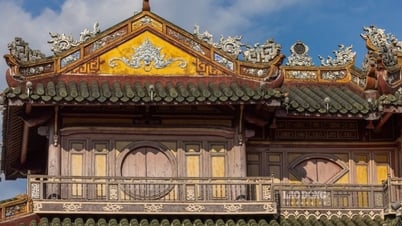In the early days, airplanes had no windows. If you look at any picture of the Wright brothers, you’ll immediately notice this. Their goal was flight, not comfort, so it makes sense that they didn’t have windows.
However, the design of airplanes gradually changed to better serve passengers, and windows were born. Before the round (or oval) windows of today, they used to be square until the 1950s - during this time, airplanes flew slower and lower than they do today. So, why did airplane windows change their shape so completely?

Before they were oval, airplane windows were square.
Airplane windows are designed to be round for safety. While pleasing to the eye, the round shape isn't just for aesthetic purposes, says Willis Orlando, executive product specialist at Scott's Cheap Flights. "The rounded corners are designed to help distribute pressure across the window, reducing the chance of the window cracking due to changes in air pressure."
As flying became more popular, airlines began flying at higher altitudes to cut costs (there was less drag, limiting unnecessary fuel use), according to Reader's Digest. The planes themselves were also subjected to increasing pressure, increasing the pressure difference between the inside and outside of the plane and causing more pressure buildup.
That's when square windows started to become dangerous. In 1953 and 1954, the first three de Havilland Comets passenger jets crashed, with square windows being the primary cause.
Specifically, on January 10, 1954, the de Havilland Comet jet aircraft number 781 (which had only been in operation for 2 years) took off from Ciampino airport in Rome (Italy) carrying 35 passengers and crew to London (England). 15 minutes after takeoff, the plane crashed into the Mediterranean Sea, killing everyone.
Analysis of the crashes concluded that “metal fatigue failure” originated at the corners of the square windows. This led to the oval design you see today, as stress could be spread more evenly around the round window rather than accumulating at the corners of the square window. This new and improved shape could distribute stress more evenly because the circle had no corners for stress to concentrate, reducing the chance of cracking. The round shape also resisted deformation better, being able to withstand the pressure difference between inside and outside the plane.
Also, the windows on airplanes are not actually glass but acrylic, a material that is more durable than glass.
Each airplane window has three layers, the outer layer is the thickest, to handle the pressure exerted on the outside of the plane. Next is another thick layer. If you try to look out the airplane window, you will notice a small hole in this layer, the purpose is to help the pressure outside and inside the plane to be equal. The inner layer is the thinnest because it only needs to withstand the pressure inside the plane.
Since windows make up a large portion of an airplane, they are an important part of airlines' routine safety inspections.
Source link



































































































Comment (0)